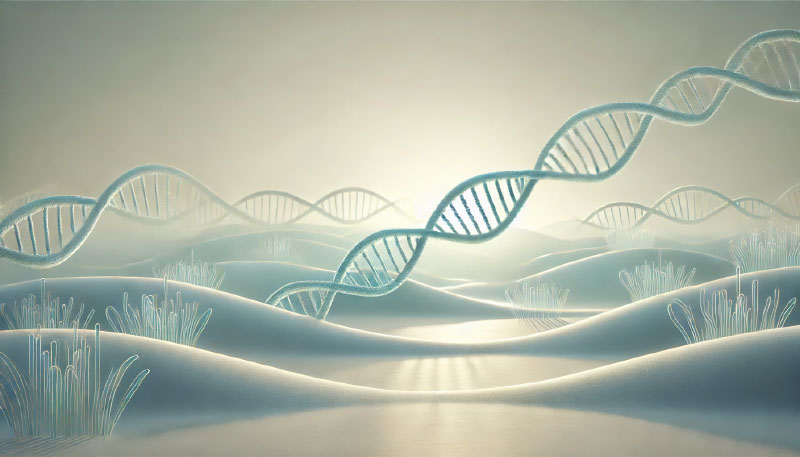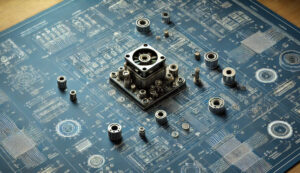United States laws relating to patent law have undergone a major overhaul in the last several years. The most important change has been the America Invents Act (AIA) which radically changed the patent laws from a First-to-Invent to a First-to-File system, thereby aligning US laws with the rest of the world. However, the key criteria for patentability remain the same.
As with all inventions, the invention must be directed to patent-eligible subject matter, must be new, useful and nonobvious. In the United States laws of nature, natural phenomena and abstract ideas are not patent-eligible subject matter. What constitutes patent eligible subject matter would appear to be easily discernible. This has not been the case. The fast paced advancement of science and a more well-informed, vocal society are factors contributing to a review and reinterpretation of laws which were seemingly settled. In the not-too-distant past, the identification, cloning and manipulation of genes was a major scientific leap forward.
A plethora of patents relating to genes had been granted by the US Patent & Trademark Office each one staking its claim to some gene or gene fragment. It was not until Myriad Genetics, a Utah-based company, which began to market its diagnostic products based on its patents on genes known as BRCA1 and BRCA2, that the interpretation of patent eligible subject matter was revisited. Both these genes are associated with hereditary breast and ovarian cancer. Myriad was accused of barring research by other institutions on the BRCA genes and making the diagnostic test too expensive for many patients, with an out-of-pocket cost of $3,000 to $4,000.
The ensuing outrage rallied opponents of gene patenting and a suit was filed against Myriad Genetics. The suit, led by the American Civil Liberties Union (ACLU) included more than 150,000 geneticists, pathologists and laboratory professionals. The ACLU argued that patents on human genes “violate the First Amendment and patent law because genes are ‘products of nature’ and therefore cannot be patented.”
The case made it to the Supreme Court. On June 13, 2013, the United States Supreme Court issued its decision in Association for Molecular Pathology, et al., Petitioners v. Myriad Genetics, Inc., et al., 569 U.S.___ (2013) addressing the question of whether DNA is patent-eligible subject matter under 35 U.S.C. § 101. Drawing a line between two different forms of DNA molecules, the Supreme Court held that isolated DNA is an unpatentable product of nature while complementary DNA (cDNA) is a non-naturally occurring genetic sequence, and is patentable under the statute.
Complementary DNA (cDNA) is single-stranded DNA that is complementary to a certain sequence of messenger RNA and is usually formed in a laboratory by the action of the enzyme reverse transcriptase on a messenger RNA template. The synthesis of cDNA was sufficient to be deemed non-natural as it was synthesized in the laboratory.
This has certainly opened up many avenues for invalidating gene patents and what else may be considered “product of nature.” The next social issue which can be paralleled to Myriad is the issue of stem cells. The topic of stem cells for use in regenerative medicine, especially embryonic stem cells, inspires much debate, discussion and outrage as it slices through the very core moral values of society. These social and moral issues have in turn resulted in government policies which have influenced the study of stem cells in regenerative medicine. Similar to the background of the Myriad case, three U.S. patents held by the Wisconsin Alumni Research Foundation (WARF) have been at the center of controversy with respect to the patenting of human embryonic stem cells.
The patents cover the first isolation of non-human primate and human embryonic stem cells (hESCs) and have been challenged by the Foundation for Taxpayer and Consumer Rights (FTCR) & the Public Patent Foundation (PUBPAT). The controversies and legal disputes generated by the WARF patents arise from challenges asserting that these patents are overly broad and restrictive, and inhibit researchers’ access to stem cell lines due to high licensing costs. Although the issue in the Myriad case was whether isolated nucleic acids are patent eligible, the ruling underscores the Court’s determination to balance access to research tools for innovation versus innovation itself.
On July 2, 2013, Consumer Watchdog requested the Court of Appeals for the Federal Circuit to apply the “product of nature” analysis based on the Myriad case to claims covering human embryonic stem cells. This appeal arises from the Patent Trial and Appeal Board’s decision in Consumer Watchdog v. Wisconsin Alumni Research Foundation (WARF) confirming the patent eligibility of claims in WARF’s U.S. Patent No. 7,209,913 covering a “replicating in vitro cell culture of human embryonic stem cells.” How the ruling in Myriad can be extrapolated to intellectual property rights in regenerative medicine remains to be seen. Much, however, may depend on the extent of human manipulation of the stem cell in the laboratory, and how the subject matter of the discovery can be translated into meaningful claims in a patent. As always, it is recommended that inventors work very closely with their patent practitioners when drafting a patent application to ensure that their products are outside of the nature exception, that the claims sufficiently describe their invention and that the invention is novel and non-obvious. Research institutions and companies should re-examine their intellectual property, regulatory, and commercial strategies in both the US and international jurisdictions and remain abreast of current patent law developments. In certain jurisdictions non-disclosure mechanisms of confidentiality and trade secrets may be the only options available in the protection of innovations.
CLS Bank brought suit against Alice Corp, seeking a declaration that the patents were invalid; Alice Corp counter-sued for infringement. Although the Court found it unnecessary to define the “precise contours of the ‘abstract ideas’ category,” it unanimously held that Alice Corp’s claims were each drawn to an “abstract idea.” The Court held that there is a two-step approach for assessing whether a claim is directed to patent ineligible subject matter. First, the Court must determine if the claim in issue is directed to one of the implicit exceptions from patent-eligible subject matter (i.e. laws of nature, natural phenomena, or abstract ideas). If so, the Court then asks if the claim elements, considered both individually and “as an ordered combination,” transform the nature of the claim into a patent-eligible application. Applying this approach, the Court stated that the method claims were directed to the abstract idea of intermediated settlement, i.e. using a third party (in this instance, the computer) to mitigate settlement risk.
The Court then found that the method claims did no more than simply provide an instruction to implement the abstract idea of intermediated settlement on a generic computer, stating the invention did not improve the functionality of the computer or effect an improvement in any other technology or technical field. Based on this reasoning, the method claims failed to transform the abstract idea into a patent-eligible invention. The remaining claims were found to recite a handful of generic computer components implementing the same idea. The Alice Corp patents were ruled invalid.
The Court’s ruling is consistent with recent public backlash against certain non-practicing entities, or “Patent Trolls”. A Patent Troll is a person or company who does not actually manufacture or supply products based upon the patents they own, but rather enforces the patents against accused infringers in an attempt to collect licensing fees. The ruling, however, could impact the Trolls’ targets as well as the Trolls themselves. Though the Court speaks in general terms about what constitutes patentable subject matter, it does not provide specific limitations or examples to define it. Thus, some of the same technology companies who have been frequently targeted by Patent Trolls need to be concerned that their own computer-implemented patents may be brought into question. Only time will tell how the Patent Office will rule on future patent applications. It is assured that if the invention employs a computer-implemented process, the Patent Office will critically scrutinize the patent application.
It is our opinion that should the inventor lack a tangible product during the patent prosecution stage, the inventor could be viewed as a Troll by the Examiner, which could affect the subjective reasoning of the Examiner during prosecution. The lower courts will also have various interpretations of this ruling as they apply it in other cases dealing with patent validity of computer-implemented methods. In summary, inventors must now expect greater scrutiny of patents and patent applications in the U.S. for software/computer-implemented methods.
By Nicholas Zachariades









